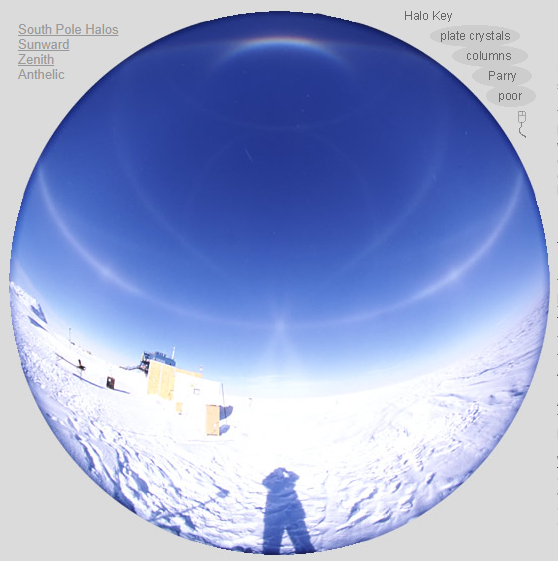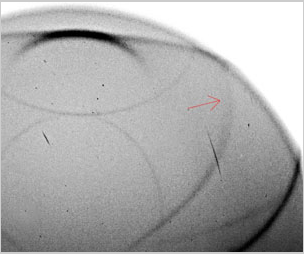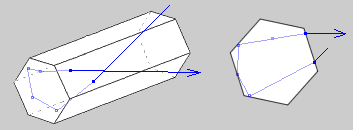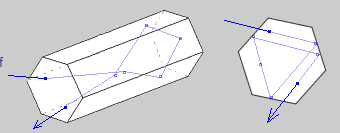South Pole Halos - Anthelic View
South Pole Halos: Exploring the Anthelic View
When it comes to atmospheric optics, the South Pole is not usually known for its abundance of halos. However, on January 11th, 1999, an extraordinary display of halos was captured by Marko Riikonen's fisheye lens. In this article, we will delve into the mesmerizing phenomenon of South Pole halos, specifically focusing on the anthelic view. Let's embark on a journey to uncover the intricate details of this rare atmospheric spectacle.
A Multitude of Arcs
In temperate climates, a single halo arc can be a cause for celebration. However, in this particular South Pole view, arcs are aplenty. Each arc, if observed individually in other regions, would undoubtedly captivate the attention of any sky-watcher. The halo key, when hovered over, reveals a multitude of arcs that adorn the sky.
Parhelia and Columns
Plate crystals, which are prevalent in the atmosphere, play a significant role in generating two bright 120º parhelia. These parhelia appear as shimmering spots of light on either side of the sun. Singly oriented columns, on the other hand, contribute to the formation of a cross centered on the anthelic point. The cross consists of two arcs: the Diffuse arc and the Tricker arc.
The Enigmatic Tricker Arc
One of the most intriguing arcs in this South Pole display is the Tricker arc. Shaped like the Ancient Egyptian "ankh" hieroglyph, the upper Tricker arc forms a loop. Its ray path closely intertwines with a subhelic arc, evident from their point of contact at the top of the Tricker loop. This convergence indicates a close relationship between these arcs and adds to the enigma of the spectacle.
Convergence at the Anthelic Point
The anthelic point, where many arcs overlap, is a sight to behold. Wegener arcs, known for their convergence, gracefully meet at the anthelic point, creating a mesmerizing display. While there isn't a specific anthelion halo, the sheer number of arcs overlapping at this point makes it appear exceptionally bright.
Parry-Oriented Columns
Parry-oriented columns also contribute to the Tricker and subhelic arcs. These columns, with their specific orientation, add to the complexity of the atmospheric optics. Additionally, the antisolar and heliac arcs, sharp and vibrant in this view, become more distinguishable from the prominent Wegener arc.
The Elusive Hastings Arc
Among the numerous arcs present in this South Pole view, the Hastings arc stands out as particularly elusive. It curves away from the brighter Wegener arc and is generated by ray paths from Parry-oriented crystals rather than singly oriented columns. While challenging to observe, the Hastings arc adds an element of rarity and fascination to the overall spectacle.
Unveiling the Diffuse Arcs
One of the contorted ray paths that form diffuse arcs involves a ray entering a side face of a singly oriented column. This ray then internally reflects off three other side faces before emerging through the entrance face. These complex paths contribute to the formation of the diffuse arcs. Exploring these intricate ray paths can be an intriguing endeavor for atmospheric optics enthusiasts.
Tricker Arc: A Doubled Reflection
Similar to the subhelic arc, the Tricker arc is produced by singly oriented columns. However, what sets the Tricker arc apart is its doubled reflection from an end face of the prism. As seen from the end of the prism, the rays of the Tricker arc are deviated through a constant 120º, adding to its unique appearance.
In conclusion, the anthelic view of South Pole halos presents an extraordinary spectacle of atmospheric optics. The convergence of arcs, the contribution of different crystal orientations, and the elusive nature of certain arcs all contribute to the allure of this phenomenon. Exploring the intricate details and complex ray paths behind these halos provides a captivating journey into the wonders of our atmosphere.

South Pole 11th January 1999.
Fisheye view pointing away from the sun by Marko Riikonen .
This is usually a halo sparse region but here it is full of arcs, any one of which appearing singly in temperate climes would be a cause for celebration. Mouse over the "Halo key" to identify them.
Plate crystals generate two bright 120º parhelia.
Singly oriented columns produce the cross centered on the anthelic point. Two arcs, the Diffuse and Tricker, make up the cross.
The upper Tricker arc is a loop and the whole arc is shaped like the Ancient Egyptian "ankh" hieroglyph.
A subhelic arc touches the top of the Tricker loop ~ a sign that their ray paths are closely related.
Wegener arcs converge at the anthelic point. There isn't an anthelion halo as such, it only appears bright because so many arcs overlap there.
Parry oriented columns also contribute to the Tricker and subhelic arcs. The antisolar and heliac arcs are sharp and bright in this view and the Hastings arc (see below) is more easily discerned from the prominent Wegener arc.

Anthelic region arcs
HaloSim simulation and image after levels adjustment followed by unsharp masking.
The parhelic circle, Wegener, Tricker and diffuse arcs all cross the anthelic point.

Hastings arc
Image converted to a b/w negative version, contrast enhanced and unsharp masked. The elusive Hastings arc (red arrowed) curves away leftwards from the brighter Wegener arc. The Hastings arc is generated by the same ray paths as the Wegener arc but from Parry oriented crystals rather than singly oriented columns. Zenith centered view
The rare heliac, antisolar (subanthelic) and subhelic arcs are stunningly prominent.
Specks and streaks are glints from individual low level ice crystals.

Diffuse arcs
One of the contorted ray paths which form diffuse arcs. A ray enters a side face of a singly oriented column. It internally reflects off three other side faces and then an end face before emerging through the entrance face. Run Halosim to find other paths.

Tricker arc
Produced by singly oriented columns. Tricker arc rays are like those of the subhelic arc except that the ray path is essentially doubled by reflection from an end face. As seen from the end of the prism the rays, like those of the subhelic arc, are deviated through a constant 120º.
Note: this article has been automatically converted from the old site and may not appear as intended. You can find the original article here.
Reference Atmospheric Optics
If you use any of the definitions, information, or data presented on Atmospheric Optics, please copy the link or reference below to properly credit us as the reference source. Thank you!
-
<a href="https://atoptics.co.uk/blog/south-pole-halos-anthelic-view/">South Pole Halos - Anthelic View</a>
-
"South Pole Halos - Anthelic View". Atmospheric Optics. Accessed on November 21, 2024. https://atoptics.co.uk/blog/south-pole-halos-anthelic-view/.
-
"South Pole Halos - Anthelic View". Atmospheric Optics, https://atoptics.co.uk/blog/south-pole-halos-anthelic-view/. Accessed 21 November, 2024
-
South Pole Halos - Anthelic View. Atmospheric Optics. Retrieved from https://atoptics.co.uk/blog/south-pole-halos-anthelic-view/.